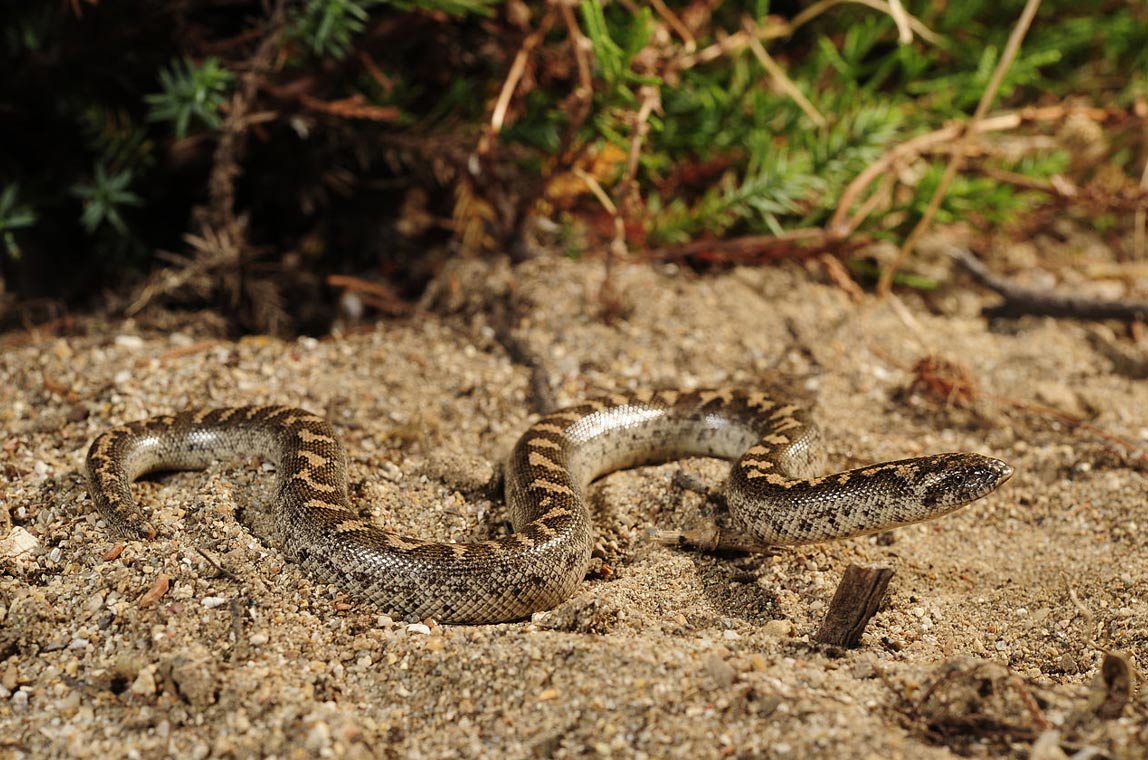Researchers Rediscover Species of Snake used as Biological and Psychological Weapon in Ancient Greece
Imagine you are in battle, probably scared out of your wits, and then enemy troops start flinging snakes in your face. The ancient Greeks did just that, says a group of researchers who rediscovered a species of boa in Sicily used in warfare, which had not been seen in nearly a century. It was a case of biological, psychological and unconventional warfare all wrapped up in one terrifying tactic.
Horses and camels have been used as war animals probably since there was warfare. Hannibal and others, including Asians, used elephants in warfare. Many armies have used dogs in war in various ways. The Romans used scorpions. Various warring people have used carrier pigeons to deliver messages from and to the front. And sadly, various peoples around the world have set fire to various species of animal, including monkeys, pigs and rats, and sent them among the enemy to sow confusion and terror.
Now a team of researchers says they have located several specimens of Eryx jaculus, the javelin sand boa, in the province of Agrigento, Sicily. The shy, non-venomous snake is not native to Sicily but the researchers think the Greeks introduced it long ago because it is there in numbers and locals have names for it.
The researchers published their findings in a short article in the journal Acta Herpetologica.
“The Greeks used to use snakes as projectiles, hurling them at enemy ships before attacking in order to create confusion and fear," said one of the researchers, Gianni Insacco, according to the news agency Ansa. “In general they used vipers that had had their venom removed. Alternatively, they would use similar species, like the sand boa.”

A painting of a mythical battle involving monkeys and elephant between the Hindu man-god Rama and the King of Lanka; both monkeys and elephants have been used in actual warfare. (Wikimedia Commons)
The Greeks were known to have used this particular species, the javelin sand boa, in battle. Ancient Greeks colonized Sicily from around 800 BC. The area where the researchers found the snakes is near the site of two ancient battles.
“Ancient introductions of snakes for religious cults or for war rituals were also proposed by Masseti and Zuffi (2011), with a particular reference to the Greeks who inhabited the area for a long time and fought two important battles on those [southern Sicilian] lands in 405 AC and in 310 AC,” says the scholars’ paper.

Ancient Greeks used snakes as weapons of war (public domain)
The javelin sand boa grows up to 84 cm (33 inches) but is usually 30 to 60 cm (12 to 24 inches) long. Its range is southeastern Europe, Greece, the Balkans, the Caucasus Mountains, into the Middle East and northern Africa. It was first reported in Sicily in the news media in 2006, but the researchers confirmed its presence there in their new study. They found six specimens—three live and three dead, two dead on the road and one drowned in a shaft, and there have been many reports over the years of other sightings.
The Greeks were not the only ones known to use snakes against their enemies. An article about using animals in warfare at AllEmpires.com gives a harrowing account of a 190 BC battle that involved Hannibal Barca:
Not many people know of his admiral and naval antics, but this is where his use of biological warfare was really highlighted. In a naval engagement against the King of Pergamum, Eumenes II, while a mercenary for a certain Empire in the East, Hannibal filled thousands of clay jars with venomous snakes and took them aboard his outnumbered and doomed fleet. As the Pergumese fleet approached, the command was given to hurl all the jars onto enemy ships. As the jars smashed, the snakes crawled out and wreaked absolute havoc among not only the sailors up top, but the oarsmen too. Snake filled jars were being flung left right and centre and the end result was in Hannibal's favour, with him winning a comprehensive victory due to the chaos he created in the enemy's ranks.
The All Empires article gives a history of animals in warfare.
Featured image: A photo of the javelin sand boa from the Peloponnese (Photo by Benny Trapp/Wikimedia Commons)
By: Mark Miller




















Comments
This was an ingenious tactic used by the Greek armies. Not so much now but back in those days, the formation was everything. So some tactic like that would have been devastating. I wonder if spiders were ever used. I'm guessing at the most benign it would have had an almost tear gas effect
Troy Mobley